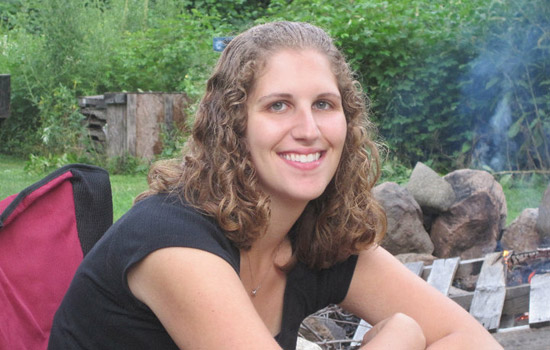Students explore solar system at Harley School
Valerie Rapson and Billy Vazquez present the Great Pluto Debate
Billy Vazquez, pictured, and Valerie Rapson, doctoral students in RIT’s Astrophysical Sciences and Technology program, took turns telling the children about each of the planets in the solar system during a school visit on March 12.
Twenty kindergarteners and first graders in the Harley School Primary B classroom waited patiently for Pluto.
Valerie Rapson and Billy Vazquez, doctoral students in RIT’s astrophysical sciences and technology program, took turns telling the children about each of the planets in the solar system during a school visit on March 12.
“Is Neptune the last planet?” Vazquez asked.
Rapson shrugged and looked at the students. “I ended my solar system talk.”
What happened to Pluto, the children wanted to know.
In 2006, when some of the children in the classroom had yet to be born, scientists at the International Astronomical Union booted Pluto out of the planetary pantheon.
“We needed to make rules,” Rapson said. “There are tons of space rocks, and not all of them can be planets. Scientists came up with three categories.”
Rule No. 1: To be a planet, you must go around the sun.
Rule No. 2: A planet must be shaped like a ball.
Rule No. 3: To be a planet, you must keep your neighborhood clean.
The children thought about that for a moment.
A moon or two—or 66 in Jupiter’s case—is one thing, Rapson and Vazquez explained to the class. But to be surrounded and pummeled by rocks and space junk way out in the Kuiper Belt is not planet-like.
Pluto goes around the sun and is shaped like a ball, but it doesn’t follow the third rule. Vazquez likened Pluto to a messy child who didn’t pick up his room. It hadn’t swept away the junk. Because it failed Rule No. 3, Pluto the planet became Pluto the dwarf planet.
Rapson clicked on the next slide of a robotic spaceship en route to Pluto. “New Horizons” launched in 2006—the year Pluto was demoted—and is scheduled to fly past the dwarf planet in 2015.
“Will they stop for lunch?” a girl asked.
Rapson explained that there are no people on the spacecraft because it will take nearly 10 years to reach Pluto.
The astronomy lesson Rapson and Vazquez presented to the children coincided with a unit on space that Harley teachers Gail Hanss and Marilyn Fenster had just begun.
“You gave them new information in a kid-friendly way,” Fenster said. “We want you to come back.”
Science outreach is an extension of Rapson and Vazquez’s fascination with astronomy. Their doctoral research has led Rapson to study star and planet formation and Vazquez to explore Active Galactic Nuclei—the center of galaxies that contain a supermassive black hole surrounded and fed by a luminous disk of gas and dust. Both of them are intrigued by exoplanets and use the observatory Vazquez built in his backyard to look for planets beyond the solar system.
Rapson and Vazquez are active members of the Astronomy Section of the Rochester Academy of Science. They’ve shared their passion for the universe with everyone from preschool children to senior citizens at the Rochester Museum and Science Center and the RIT Observatory and joined their efforts for their second Harley presentation.
“Scientists are born at this young age, when their minds are full of wonder and curiosity,” Vazquez says. “By the time kids are in high school, if they’re not interested in science and math, it’s hard to get them interested at all. We have to catch kids when they’re young to have a chance of cultivating a scientific mind.”
 Valerie Rapson, pictured, and Billy Vazquez, doctoral students in RIT’s Astrophysical Sciences and Technology program, took turns telling the children about each of the planets in the solar system during a school visit on March 12.
Valerie Rapson, pictured, and Billy Vazquez, doctoral students in RIT’s Astrophysical Sciences and Technology program, took turns telling the children about each of the planets in the solar system during a school visit on March 12.














